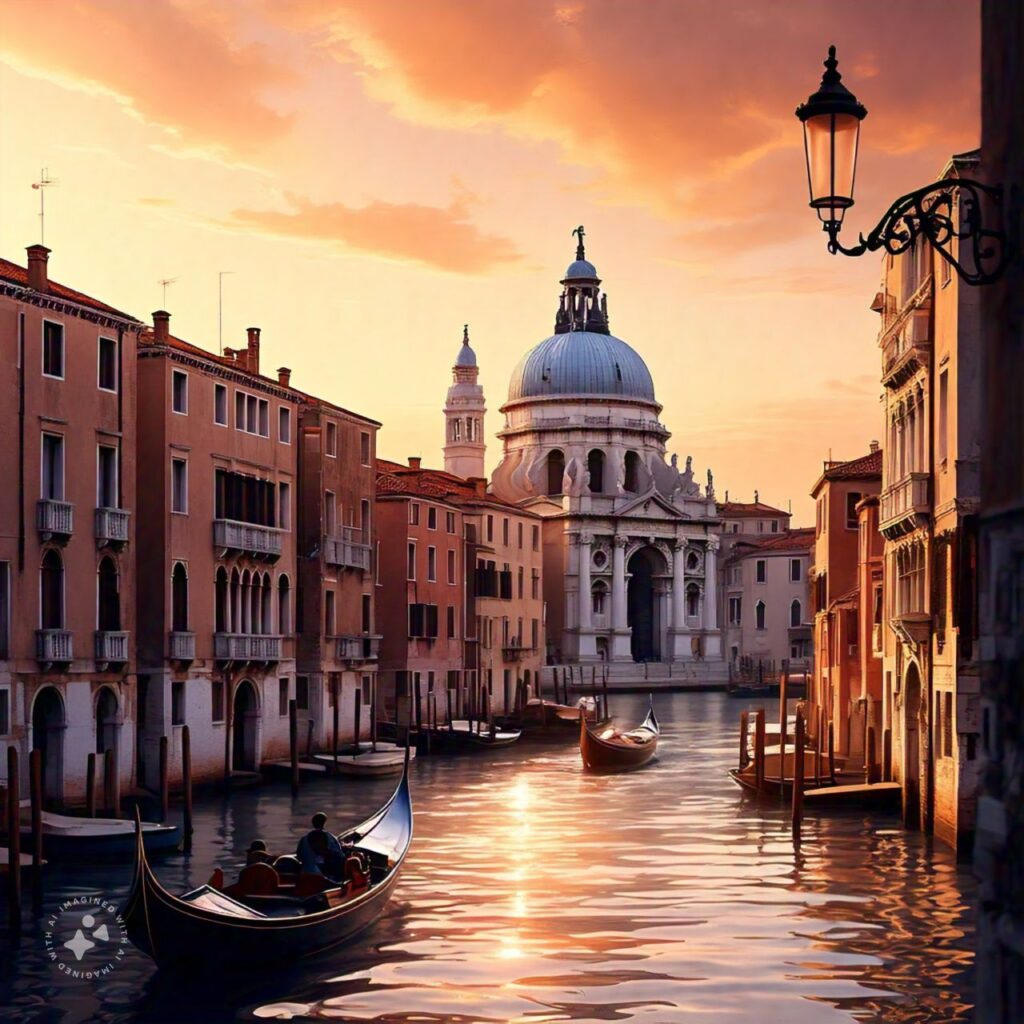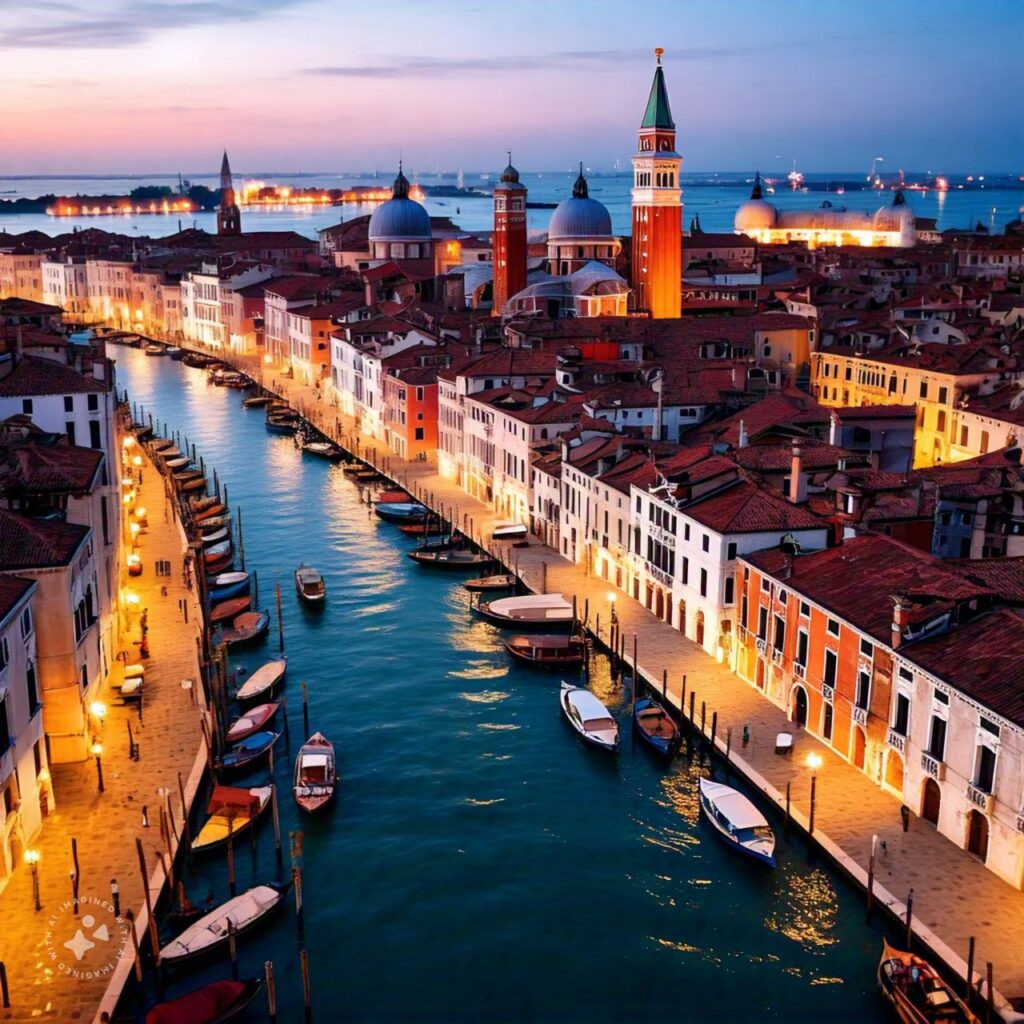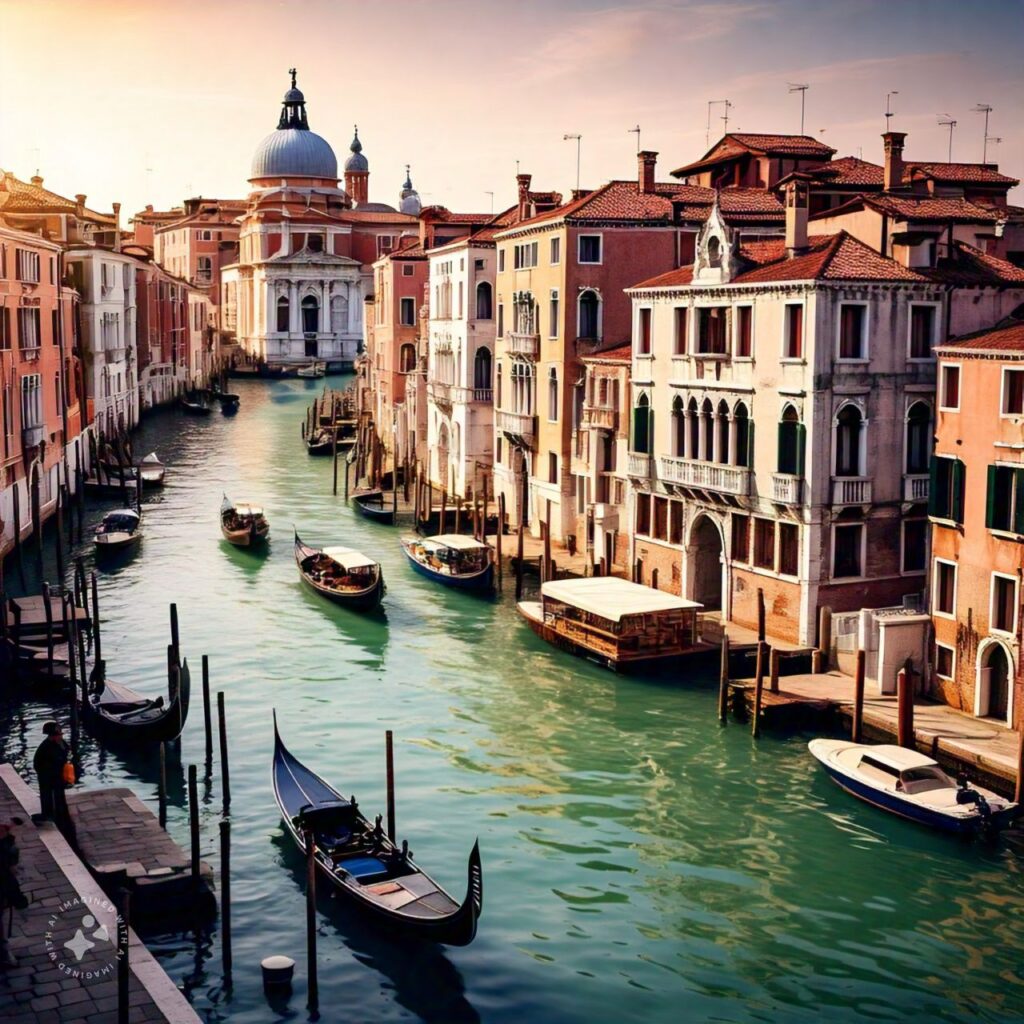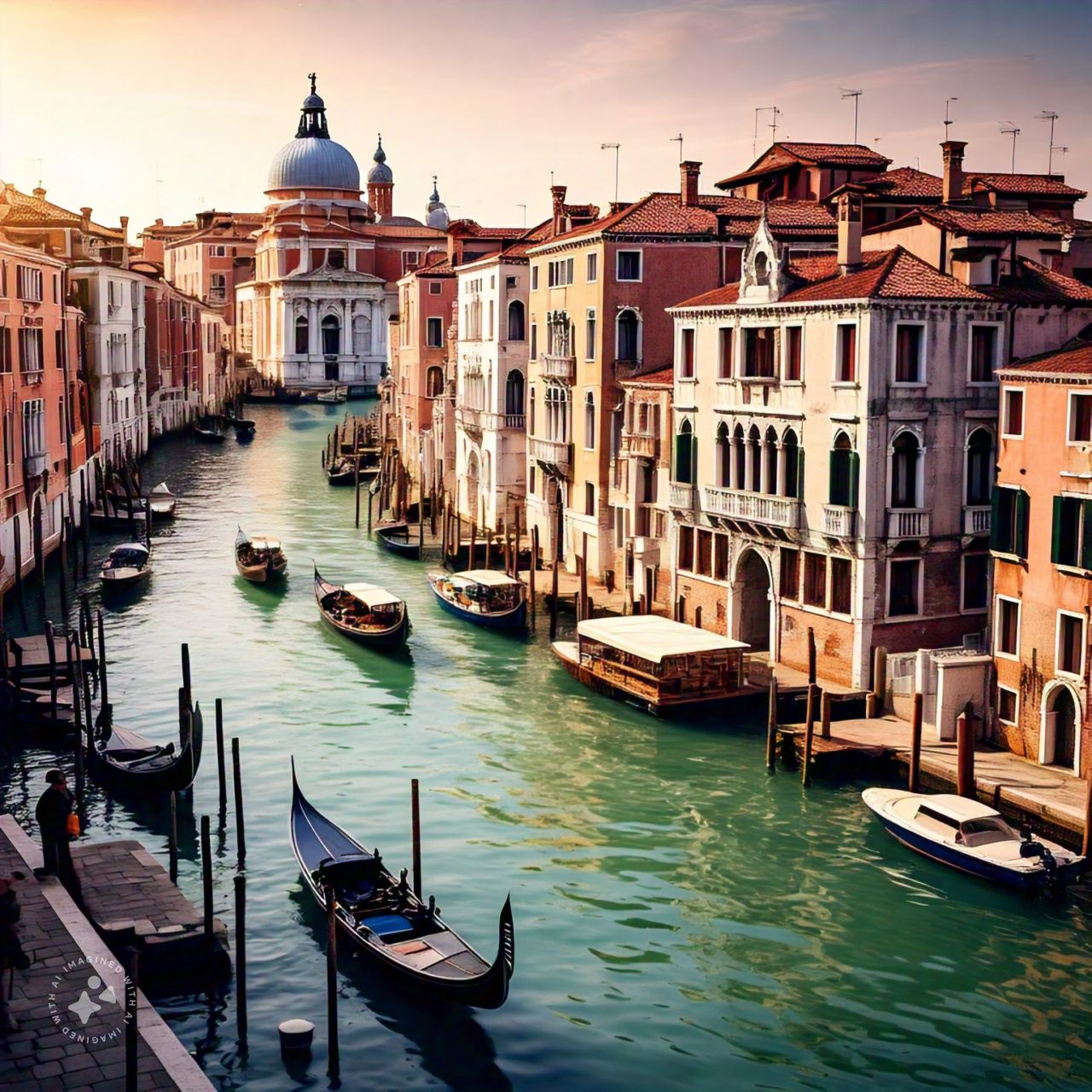Nestled in the heart of the Adriatic Sea, Venice is a city like no other. Known for its romantic canals, historic architecture, and rich cultural heritage, Venice is often called “La Serenissima” (The Most Serene), reflecting both its historical prestige and tranquil beauty. Built on a series of 118 small islands in the Venetian Lagoon, Venice is a marvel of engineering and human ingenuity, where every corner reveals centuries of history, art, and tradition.
In this article, we will explore the unique aspects of Venice that make it one of the most cherished cities in the world—its canals, history, architecture, culture, and the challenges it faces today.

A Brief History of Venice
The origins of Venice date back to the 5th century when local populations sought refuge on the islands of the Venetian Lagoon to escape barbarian invasions. Over time, these settlements grew into a thriving city-state. By the 9th century, Venice became an important trading power, connecting the East and West through its strategic location between Europe and the Byzantine Empire. The city flourished as a Republic, governed by a Doge (duke) and known for its maritime strength, wealth, and diplomacy.
For over a thousand years, Venice was a dominant force in Mediterranean trade, culture, and politics. It was renowned for its shipbuilding prowess, commercial success, and its unique style of governance. Venetian merchants traded goods from all over the world, and the city’s influence extended far beyond its lagoon. Venice became a hub of the Renaissance, attracting artists, philosophers, and intellectuals.
The city’s power began to decline in the 17th century with the rise of other European empires, but Venice continued to captivate the imagination of travelers and artists alike. Today, Venice remains a living testament to its glorious past, where ancient palaces and churches sit alongside bustling cafes and artisan shops.
The Canals: Venice’s Lifeblood
One of the most striking features of Venice is its intricate network of canals, which wind their way through the city like veins in a living organism. There are more than 150 canals in Venice, varying in size from narrow, secluded passages to wide thoroughfares, such as the famous Grand Canal.
The Grand Canal
The Grand Canal is the main waterway of Venice and serves as the city’s busiest and most prominent canal. Spanning about 3.8 kilometers (2.4 miles), the Grand Canal is lined with some of the most elegant buildings in Venice, many of which date back to the Renaissance and Baroque periods. The canal is a major transportation route, with vaporettos (water buses), gondolas, and water taxis transporting both locals and tourists through its waters. The view of the Grand Canal from the Rialto Bridge is one of the most iconic vistas in the city.
Gondolas: Venice’s Traditional Boats
Perhaps the most romantic image associated with Venice is the gondola, the sleek, black boat used for private transport along the canals. Gondoliers, dressed in traditional striped shirts, navigate the canals with skill and grace, offering both locals and tourists a unique way to explore the city. A gondola ride has become synonymous with romance, and for centuries, it has been a symbol of Venice’s charm and timeless elegance.
The Canal System and City Planning
The canals in Venice serve not only as transportation routes but also as the lifeblood of the city, linking its many islands and neighborhoods. The waterways were originally built to provide access to trade and resources, but over the centuries, they have become integral to Venice’s identity. The buildings lining the canals were designed with narrow wooden foundations driven deep into the lagoon’s soft soil. This engineering marvel allowed Venice to flourish, but it also means that the city is constantly battling the challenges of sinking and rising sea levels.
Venetian Architecture: A Blend of Cultures
Venice’s architecture is one of the most distinctive in the world, a rich blend of Byzantine, Gothic, Renaissance, and Baroque styles that reflects the city’s long history of cultural exchange. Venice’s most famous architectural landmark is the Basilica di San Marco (St. Mark’s Basilica), a grand cathedral that features a stunning blend of Byzantine mosaics, Romanesque arches, and Gothic spires.

The Rialto Bridge
The Rialto Bridge is another famous landmark of Venice, connecting the San Marco district with the San Polo district. Built in the late 16th century, the Rialto is the oldest and most iconic of the four bridges that span the Grand Canal. The bridge is adorned with shops and offers an unbeatable view of the waterway below.
Palaces and Palazzos
Venice is also known for its grand palaces, many of which line the canals. The Ca’ d’Oro and Palazzo Ducale (Doge’s Palace) are prime examples of Venetian palatial architecture, with their intricate facades, stunning courtyards, and ornate interiors. These palaces were once home to Venice’s aristocracy and wealthy merchants, who displayed their wealth through extravagant designs and luxurious decorations. The palaces continue to house art collections and serve as museums today.
Venetian Culture: A City of Art and Tradition
Venice is a city deeply embedded in the arts. Over the centuries, it has inspired countless artists, musicians, and writers. It was home to the renowned Venetian School of painting, with masters like Titian, Tintoretto, and Veronese creating masterpieces that continue to define Western art.
Venice and the Carnival
One of the most famous cultural events in Venice is the Carnival of Venice, a centuries-old tradition that typically takes place in the weeks leading up to Lent. During the Carnival, the city comes alive with elaborate masks, costumes, and masquerade balls. The tradition of wearing masks in Venice dates back to the 12th century, and the most famous of these is the Bauta mask, which allows the wearer to remain anonymous. The Carnival is a celebration of Venice’s history, with its opulent costumes and lively festivities capturing the city’s playful yet mysterious character.

Venice: A City of Music and Theater
Venice has long been a center of musical innovation. The city is the birthplace of Antonio Vivaldi, one of the most famous composers of the Baroque era, whose music continues to echo through the canals. The Teatro La Fenice is one of the most renowned opera houses in the world, hosting performances that attract music lovers from across the globe.
The Challenges Facing Venice
While Venice is undeniably beautiful, it faces numerous challenges that threaten its existence. The rising sea levels and frequent flooding due to climate change have caused severe damage to the city’s infrastructure. The phenomenon known as acqua alta (high water) is becoming more common, with frequent floods damaging buildings, artwork, and cultural sites. In recent years, efforts such as the MOSE Project, a system of flood barriers, have been introduced to combat the rising waters, though the effectiveness of these measures is still uncertain.
Another major concern is over-tourism, which places a strain on the city’s infrastructure, local economy, and environment. The increasing number of tourists has led to overcrowding in popular areas and put pressure on local residents, leading some to question whether tourism is sustainable for Venice in the long term.
Conclusion: Venice’s Timeless Charm
Despite the challenges it faces, Venice remains one of the most enchanting cities in the world. Its canals, palaces, churches, and art create an unparalleled atmosphere of romance, history, and culture. The city stands as a living museum, with centuries of stories etched into its cobblestone streets and flowing waters. Whether you are navigating the Grand Canal in a gondola, wandering through its maze of alleyways, or marveling at the architectural wonders that dot the cityscape, Venice offers a unique and unforgettable experience.
In a world that is rapidly changing, Venice’s timeless beauty and cultural legacy remind us of the importance of preserving our heritage for future generations. As the “floating city” continues to captivate the hearts and minds of those who visit, it remains an enduring symbol of human ingenuity, creativity, and the desire to create beauty in harmony with nature.
